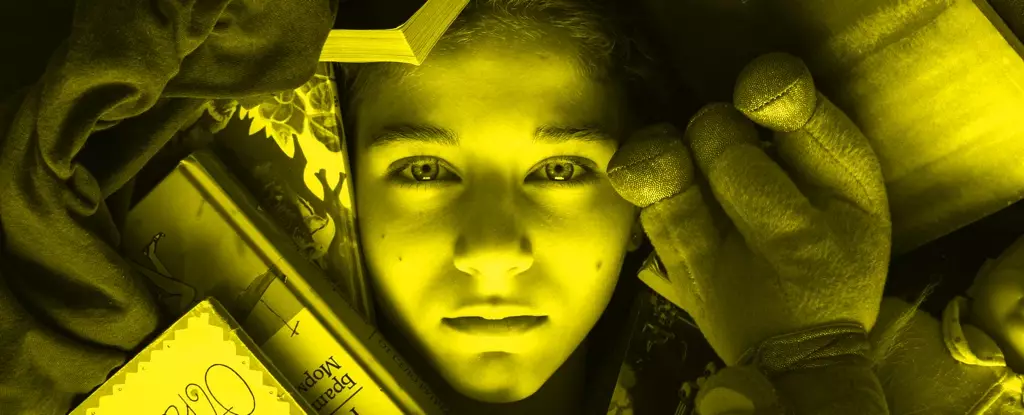Recently, I underwent an emotional journey alongside my mother as we sifted through a trove of memories stored in inherited boxes from my late grandparents. One box, oddly titled “toothpick holders and other treasures,” turned out to be a Pandora’s box of memories that lacked the very toothpick holders it claimed to hold. As we dug deeper into remnants of the past, one artifact stood out—a solitary puzzle piece. It encapsulated my grandmother’s whimsical habit of playfully withholding the last piece of a jigsaw puzzle, just to swoop in and complete it at the last moment. After several hours of sentimental reflection, we discarded almost everything, leading us to confront a profound question: “Why did I keep this?” This inquiry resonates not only with my family and friends, but also in my professional life as a licensed clinical psychologist specializing in hoarding disorder, particularly among older adults.
Hoarding disorder is a complex psychological issue marked by the compulsive urge to save items combined with an inability to part with possessions. For many older adults, this can hinder daily living and create hazardous living conditions. Interestingly, while some individuals fulfill clinical criteria for hoarding disorder, a considerable number still grapple with clutter without meeting these strict definitions. The natural inclination to hold onto items laden with sentimental value or potential utility can intensify with age, leading some to develop clinically significant hoarding behaviors.
Recent studies have suggested that age-related declines in executive function may contribute to this growing issue. Impaired decision-making abilities often exacerbate the challenge of sorting through personal belongings. Historically, it was assumed that the distress associated with parting from possessions was the primary driver of hoarding. However, my research indicates that older adults may experience reduced anxiety during the decision-making process, allowing them to derive positive emotions from their sorting tasks.
During a notable study conducted while I was a graduate student, I observed that older adults with hoarding tendencies often reported positive feelings while deciding what to keep or discard. This finding was unexpected, challenging the conventional wisdom that fear was the predominant motivator behind hoarding behavior. Furthermore, our research revealed that participants exhibited high levels of altruism—often feeling a deep sense of responsibility for the items they kept, articulating thoughts such as, “I need this item to go to a good home,” or “This was my grandmother’s gift to me.”
This altruistic mindset can drastically reshape our understanding of hoarding. Individuals might find themselves holding onto possessions due to personal values rather than fear of loss. Such insights have far-reaching implications for therapeutic practices and interventions aimed at decluttering living spaces.
In our 2024 study, we introduced a values-focused approach to decluttering for older adults. By implementing motivational interviewing techniques, clinicians assisted participants in articulating their deeper motivations while sorting through their possessions. By centering our discussions around personal values, we found that older adults were able to maintain focus on their long-term goals and derive greater satisfaction from the decluttering process.
The concept of values is inherently subjective. For instance, a dress that once brought joy during a family event may hold a different status depending on individual priorities. Emphasizing specific values can facilitate healthier decision-making regarding one’s possessions. When I faced the decision to part with a wedding dress that no longer fit me, I opted to pass it along to someone who needed it, which resonated more with my values of utility and helpfulness.
The practical applications drawn from this research extend beyond older adults and can assist anyone grappling with clutter. One critical step is to articulate personal values that resonate deeply. Pondering on what each item represents in light of these values can lead to clearer decision-making.
For example, if family and tradition are at the forefront of one’s values, it becomes easier to identify cherished possessions, whereas items perceived as “just clutter” may be easier to let go. Similarly, recognizing that values can sometimes conflict helps in making difficult decisions. If a cherished item serves less purpose in your current life, ask yourself if keeping it aligns with your future aspirations.
Lastly, when assisting a loved one in decluttering, approach with empathy and curiosity. What may appear as unnecessary clutter to you might be an irreplaceable treasure in someone else’s eyes.
As we navigate our lives, the items we choose to keep and discard serve as reflections of our values and memories. Recognizing the role these elements play in our lives can lead to a more conscious approach to clutter and hoarding. For further insights and guidance on hoarding disorder, the International OCD Foundation offers valuable resources for both individuals and families facing these challenges. By fostering an environment that emphasizes values and understanding, we can create a supportive framework for healthier decision-making around our possessions and memories.

Leave a Reply